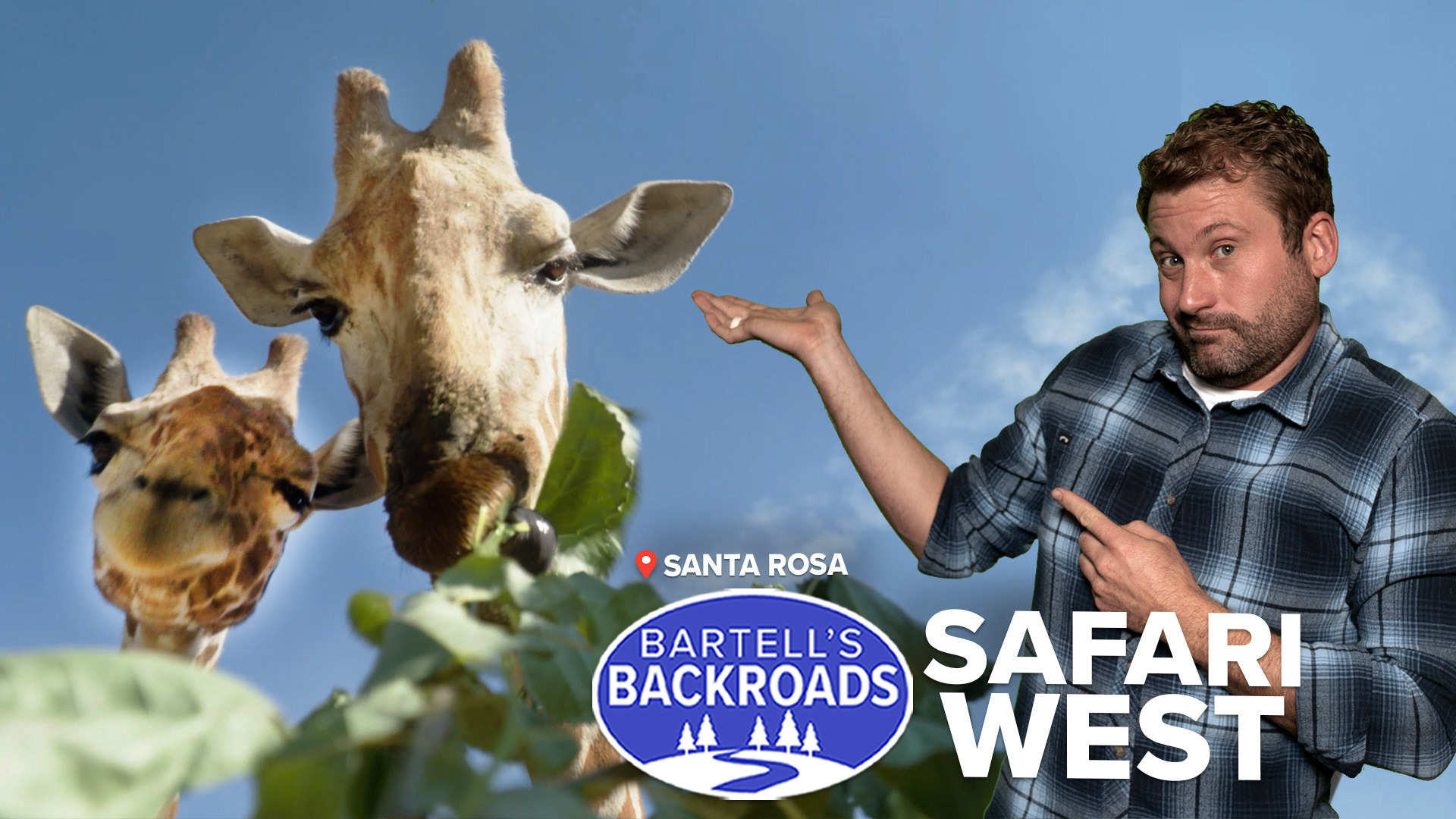SANTA ROSA, Calif. — Hiding within Sonoma County’s wine country, beasts foreign to California roam a tree covered hillside looking for their next meal. Giraffes and rhinos are just some of the star attractions at Safari West in Santa Rosa.
The 400-acre African-themed park offers an up-close animal experience and it's tour guide Jeff DaSilva’s job to get visitors close while riding on the park's two-story safari trucks. There are a lot of animals that might show up as the trucks go by.
“In total, anywhere from 900 to 1,000 individual animals here on the property with about 100 different species,” said DaSilva.
DaSilva says Safari West started out as a breeding preserve for threatened and endangered animals. The goal is to help zoos and nature preserves protect and repopulate different species like baby Otto, the park's first successful birth of a Southern White Rhinoceros.
“We were a breeding preserve and still are, so we do buy, sell, trade, loan animals to other zoos here in the states, and we are very successful. We are just so excited to have a baby rhino. We’ve been trying to breed rhinos since about 2008,” said DaSilva.
After more than a century of protection and management, white rhinos have moved of the endangered list.
“They are classified as a near-threatened species and there’s about 15,000 to 16,000 left right now, which is awesome,” said DaSilva.
TAKE A TRIP ON BARTELL'S BACKROADS:
► See an interactive map of everywhere John has visited on the backroads
► Watch all of the Backroads videos
► Follow John on Facebook
Every tour is different at Safari West and because the property is so big, you may not see all the animals.
“That's kind of the beauty of the property is It really feels like a safari. You don’t know what you are going to see, where you're going to see it and how good that sighting is going to be,” said DaSilva.
One place you are guaranteed to see animals is in the aviary. When co-owner Nancy Lang and her husband Peter first started giving safari tours in 1993, the idea of co-mingling people in animal habitats didn’t really take off at first.
“No one came! On the first day no one came,” said Lang.
Lang says a safari was a new idea in this area, but she and her husband believed that if people could get an up-close experience with the animals, they would feel more connected and want to protect them.
“[Conservation is] a huge part of what we do. Breeding for maintaining endangered species with the right genetics and getting people excited about conservation projects in the U.S. and beyond,” said Lang.
MORE WILDLIFE ON THE BACKROADS: Every day is hump day at this California camel dairy and rescue center.



















